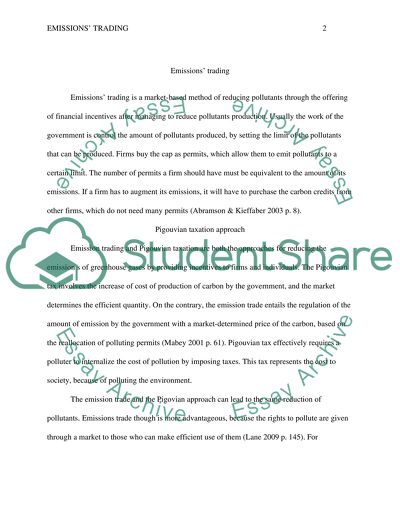Explain why emissions' trading is a compromise between a) the Pigovian Essay. Retrieved from https://studentshare.org/macro-microeconomics/1437607-explain-why-emissionsyie-trading-is-a-compromise
Explain Why emissions' Trading Is a Compromise Between A) the Pigovian Essay. https://studentshare.org/macro-microeconomics/1437607-explain-why-emissionsyie-trading-is-a-compromise.


